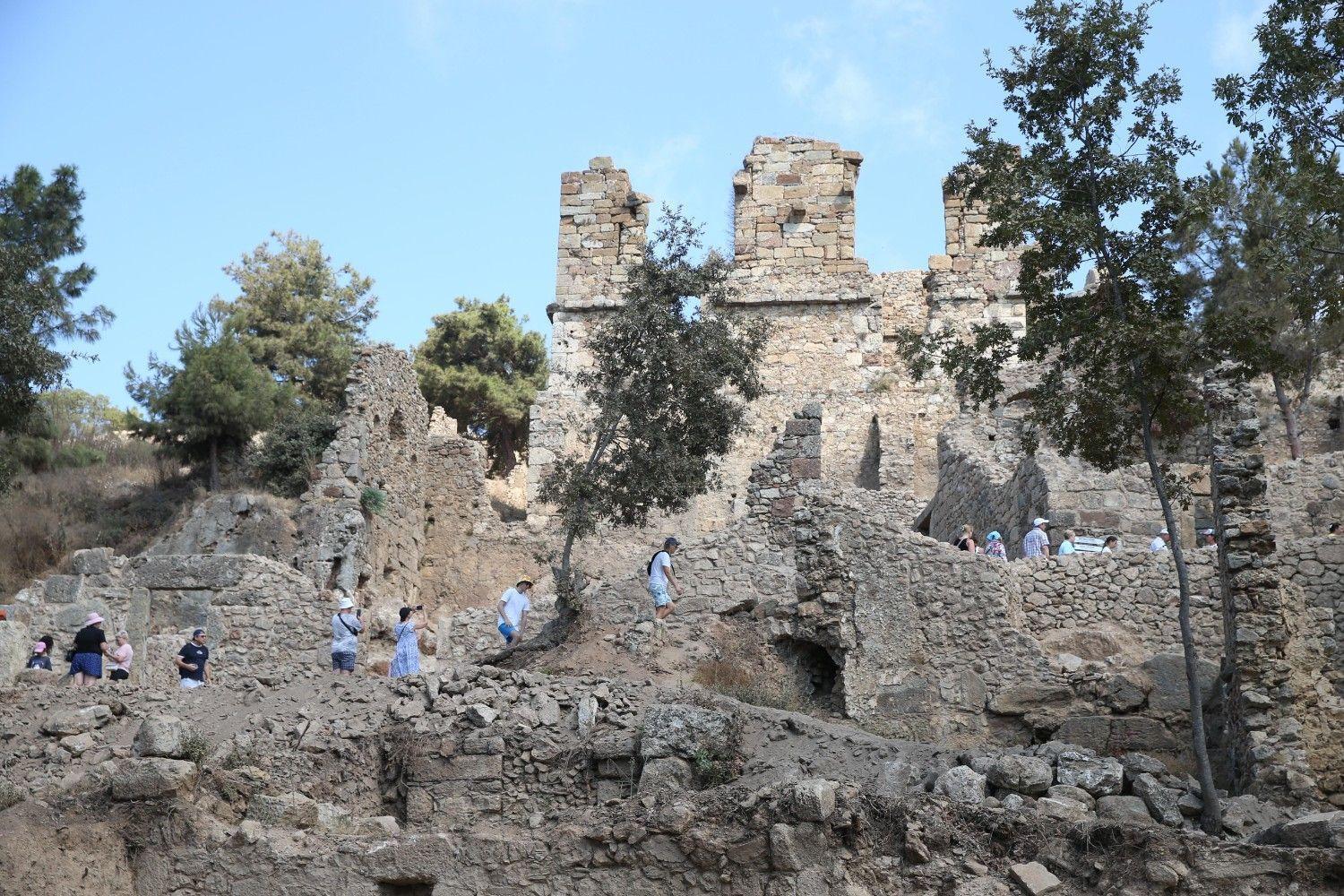
Archaeological excavations in the ancient city of Syedra, situated in the southern province of Antalya’s Alanya district, have revealed the remains of a nearly 1,800-year-old stadium.
Syedra dates back to the 9th century B.C. and bears traces of the Hellenistic, Roman, Byzantine and Anatolian Seljuk civilizations. The site is among those being unearthed under the Culture and Tourism Ministry’s Heritage for the Future project.
The ancient city stands out with its colonnaded street, baptism cave, bath, assembly building, cisterns, advanced water infrastructure, staircases, mosaics depicting the Twelve Labors of Hercules and statues of the goddess Nike.
This year’s work focused on the southern area of the city, where the stadium was identified, said Ertuğ Ergürer, the head of the excavations.
“We knew about the seating rows but had not located the structure due to the steep terrain at 340 meters elevation. Finally, we uncovered a stadium about 200 meters long and 16 meters wide,” he said.
Ergürer noted that inscriptions from the city reference sports such as wrestling and boxing, suggesting the stadium hosted athletic games, religious festivals and imperial celebrations.
“The existence of a stadium here shows that Syedra was a developed, prosperous city with a distinctive status in the region,” he added.
Believed to seat 2,000-3,000 spectators, the stadium was carved directly into the bedrock.
While its northern section is well preserved, the southern part suffered damage from later fortification walls.
Excavators have revealed seating rows, stairways and finely crafted stone blocks.
Ergürer suggested the structure may have combined stone and wooden seating, as seen in the city’s theater. Work continues to expose the remaining sections.